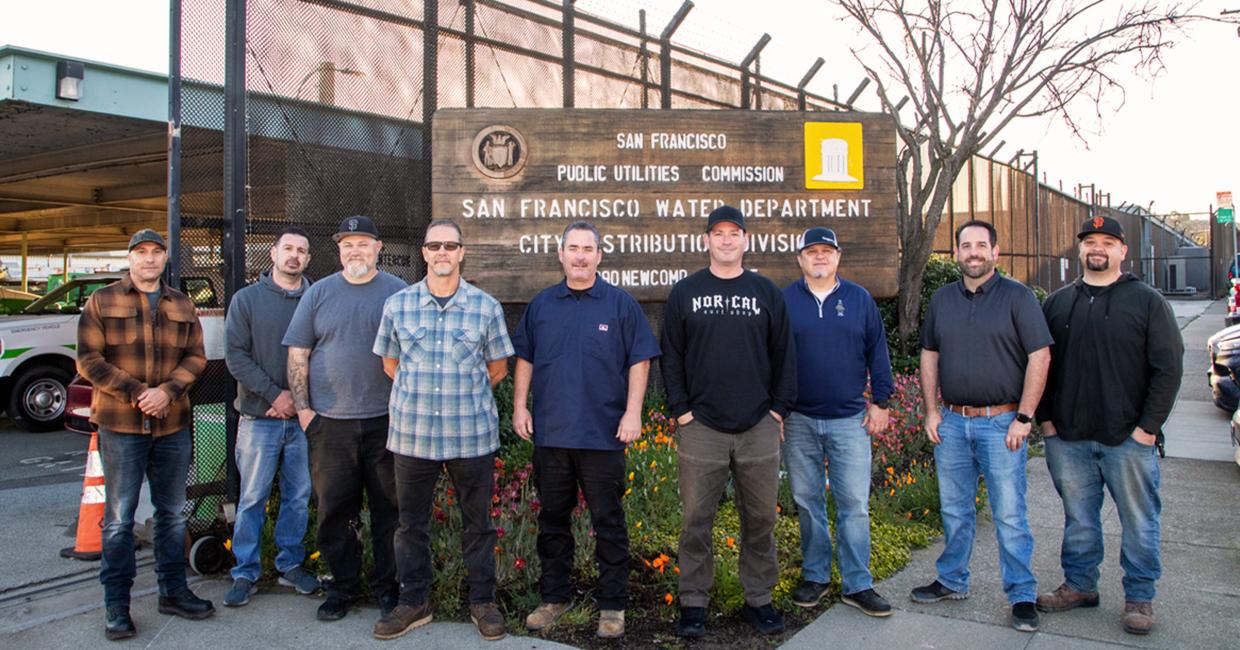Contrary to popular belief, a firefighter’s best friend is not a Dalmatian but a gateman at the San Francisco Public Utilities Commission (SFPUC). Just ask Bob Olinger, who is a water distribution system operator, also called a gateman, at the San Francisco Water Division. Bob operates the valves in the streets that regulate the City’s water supplies, and he and his 11-person crew of fellow gatemen are essential partners to the San Francisco Fire Department. Here are more details about Bob’s work:
- Gatemen are the firefighter’s first call. In any two-alarm or higher fire, a gateman is called to the scene to monitor water pressure and supply. This requires more than simply keeping an eye on the nearest hydrant. From the moment he arrives, Bob is assessing how much water is being used and calculating different water pressures and elevation levels to increase water supply as necessary. His deep knowledge of the city’s network of hydrants, water mains, and tanks ensures that the water flows uninterrupted. At the same time, he’s also checking the Emergency Firefighting Water System, an entirely separate water supply and pipeline network for fighting large fires and calling upon those resources as needed.

- The job requires strength – lots of it. San Francisco’s water mains can sometimes be buried up to eight feet deep underground, and they are also aging -- 20% of San Francisco's water pipes are over 100 years old and made of cast iron. (Bob has seen water mains as old as 1876!) Gatemen use a special gate wrench to reach and turn the gate valves to open up water mains. Sometimes the valves are so challenging to open that it requires two gatemen. Says Bob: “This is why you might see two people applying a lot of force as they walk around in a circle – those valves might not have been turned on for years!”
- Water pressure needs to be high to fight fires effectively. The pressure and volume of water flow are important factors for firefighters to consider when extinguishing a fire. High pressure and high volume will result in a powerful water stream that can reach great heights and cover large areas, so Bob’s primary responsibility on site is to ensure that the water mains have a steady supply.
When not supporting firefighting efforts, gatemen are responsible for flushing water mains; inspecting reservoirs, tanks, and pump stations for peak performance; and responding to water main breaks and upgrades. The job is 24/7 including holidays, which requires Bob and his team to work on a rotation schedule: three gatemen work seven consecutive days, while the rest are on the day shift Monday through Friday.
Why are they called “gatemen”?
The SFPUC's city distribution system consists of over 8,500 hydrants and 1,250 miles of pipeline network, with pipes ranging from 4 – 60 inches in diameter. The water supply is streamed through 11 reservoir systems and nine tanks and pressurized with 10 pump stations.
After the SFPUC purchased the Spring Valley Water Company’s assets and formed the City’s Water Division in 1939, the SFPUC inherited Spring Valley’s “gatebook,” a manual which listed the location of every valve in the city. Through the years, it has been updated with hand-drawn maps to illustrate the location of San Francisco's water network and its proximity to property boundaries or curb lines. Named for gate valves, the gatebook has since been digitized and layered with geographic information system (GIS). The water system operators use the gatebook whenever they’re in the field, and since they’re the keepers of the book, the nickname of “gatemen” stuck.


